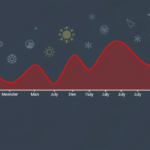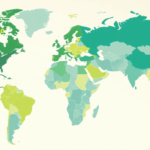Why Most Blogger Partnerships Fizzle Before They Make a Dime
What Actually Counts as a Growth Opportunity (Hint: Not Traffic Swaps)
There was this weird stretch in 2021 when everyone I knew was talking about “blogger collabs” like some sort of panacea. You DM someone, guest post or link back, and boom, both of you get rich. Yeah, no. That helped exactly zero of my AdSense RPMs or subscriber rates. Plenty of backlinks, no engagement. Why?
Because half of these so-called partnerships were low-effort ego trades. A real growth opportunity — the kind that nudges organic rankings or triggers better ad fill rates — usually has a few traits:
- It connects you to a new audience that already cares about adjacent topics.
- It shifts your authority in Google’s eyes (anchor contexts matter).
- It gets shared or picked up outside your blogs (Reddit, Feedly, sometimes even Hacker News).
Just tossing links back and forth rarely triggers any of that. For AdSense especially, metrics like session time, number of scrolls before ad click, and return visits have more weight than blind traffic. Send the wrong crowd to each other and both sides tank.
Shared UTM Hell: When Tracking Collabs Eats Itself Alive
I once had four collabs running the same month. Some email newsletter swap, two guest posts, and one Discord-fueled traffic surge. Sounds cool, except I got greedy and slapped nearly identical UTM tags on every link. You know what happened?
In Google Analytics, all traffic showed up under a single campaign source. And in AdSense, RPM went down, because session duration started looking artificially low (thanks to tracking parameter bloat and self-referral loops).
Better Way to Tag Collaborations
Use unique UTM terms and watch for recursion. Here’s what I do now:
utm_source=blogname&utm_medium=guestpost&utm_campaign=blogger-collab-july- Use shorteners sparingly — some ad blockers inflate bounce rates if they detect outbound redirects.
- Avoid sending people to your homepage. Deep links almost always retain context better.
Also, if Cloudflare is proxying your traffic and you’re using Rocket Loader or something similar, brace yourself: it might rewrite outbound links on dynamic elements (e.g., React routers), which breaks origin tracking. Confirm in-browser using DevTools → Network tab → preserve log → watch what triggers upon link click. I’ve lost precious referring data because I didn’t spot this early.
When Blogger Relationships Become Asymmetrical (and That’s Fine)
There’s this idea that every collab should be equal — equal traffic, equal mention frequency, equal link placement. But that’s rarely how growth opportunities emerge.
One blogger I partnered with had four times my traffic, but they loved my post format. I did three guest articles. Got zero traffic the first month. Then one of those posts got picked up on LinkedIn. Suddenly I was seeing spikes — legit clicks from HR professionals, not low-funnel blog readers. My content wasn’t just filling a post quota, it became own-page SEO fuel for them, and in return, a traffic tailwind for me that lasted months.
Trying to keep things “balanced” would’ve killed that relationship.
The Silent AdSense Penalty No One Discusses: Audience Mismatch
Here’s one I only recognized after tanking over 50% of my revenue in a week. I cross-promoted with a lifestyle blogger who had insane Pinterest numbers. We swapped content modules. Suddenly I’m seeing lots of visits from subdomains like amp.pinterest.com and a weird wave of mobile-only traffic with 100% scroll but 0% clickthrough on ads.
AdSense doesn’t flag that as invalid traffic… but over the next two weeks, my fill rates dipped, CPC cratered, and ads stopped showing on some pages altogether. No warnings, just ghosted monetization.
Why It Happens
Pinterest (and other mobile-first traffic aggregators) tend to generate passive traffic. People click through for DIY hacks, skim fast, and bounce. AdSense’s machine learning starts treating those users as less engaged — which affects your entire site’s scoring. And it recalibrates faster than you’d think. One bad audience pump and you’re locked in an engagement penalty cycle.
Recovery was pure guesswork. I removed certain traffic segments manually via analytics filters, requalified the bad traffic away from MVP content, and prayed the RPMs would stabilize. It took a month.
Don’t Just Trade Links — Trade Analytics
This one’s minor but weirdly powerful. Trading analytics access (read-only) with a partner blogger — assuming mutual trust — lets you:
- See which article placements actually triggered traffic (not just raw clicks).
- Understand scroll and ad engagement differences.
- Adjust things mid-campaign instead of waiting for post-mortem conclusions.
What blew my mind: One collaborator had consistently higher session durations on MY posts than their native content. Turns out my lazy-loaded embedded code snippets were keeping dev readers engaged. So I built more posts like those, and we expanded the partnership long-term.
If you’re not comfortable sharing full analytics, even trading scroll depth reports via Looker Studio snapshots works.
How Browser Behavior Breaks Embedded Growth Widgets
I was using a small pop-in widget that surfaced “Recommended From Our Partner” content. Great in theory, except I discovered in Brave and Firefox containers, the widget’s iframe was getting stripped. Or worse — showing fallback blank space without logging any impression at all.
Clue from the Dev Console:
RefugeError: The frame navigating must not be sandboxed and must have a browsing context.
Turns out this only triggered on embedded widgets using legacy postMessage calls with unescaped window.parent logic and no CORS headers.
This affected at least 60% of mobile Android sessions coming via Reddit. Reddit app → Brave browser handoff → container wipe = no widget load. AdSense obviously won’t monetize that traffic if your injected blocks don’t render.
I rebuilt one version using raw <a> tags and rel=noreferrer noopener instead. Engagement nearly doubled.
One Weird Edge Case: When a Collab Tripwires Your DMCA Filter
This one cost me access to my own Google Search Console for two days. I embedded a block from a partner’s article with attribution and canonical tags set. However, their original blog was scraping content from Stack Overflow — and that triggered a DMCA complaint on their domain.
Because we were technically rehosting some of their structured data blocks (JSON-LD schema stuff), my site got pulled into the takedown batch. GSC access locked. I couldn’t reverify for 48 hours because the site key failed to propagate. The worst part? The offending post wasn’t even the one we agreed to collaborate on — it was just linked in the sidebar of the iframe embed.
So now I manually download and diff any content I’m embedding above-the-fold. If it matches common datasets (like mdn CDN text snippets or Stack Overflow captures), I flag and rephrase or just embed a summary instead. Paranoia? Maybe. But my staging domain stayed clean because I ran diff-checks manually before pushing live.
Aha Moment: AdSense Behavior Quietly Adjusts by Referral Network
This floored me, and I only caught it because I was debugging a weird RPM mismatch. My site was getting bumped traffic from two sources: a blogger mention on a tech podcast site and a Reddit AMA mention. Roughly equal numbers — totally different performance.
Source: podcast.co/referral
RPM: $15+
Avg. session: 01:07
Scroll: 91%
Source: reddit.com/r/startups
RPM: $3-
Avg. session: 00:17
Scroll: 35%Both drove traffic to the exact same page. Same ads, same load order. But AdSense clearly contextualized them differently. Why? Probably historical inventory match rates per source domain, maybe even bounce-based pruning of ad networks. Either way, this made it clear: some partners are better signal carriers than others. I now vet not just the blogger but where their traffic comes from (Telegram? Indie Hackers? Tech mailing lists?). Sources with better audience alignment get bigger feature space on my pages — period.
Deadweight Collabs Still Burn Crawl Budget
I learned this when I started running performance audits with Screaming Frog. Pages I wrote as pure favors for blog friends — non-promoted interviews, dead tag pages, junk guest posts — all still got crawled. But they received zero external backlinks, zero mentions, and weren’t doing anything for my ad inventory.
This matters because if your site is auto-generated for AdSense experiment rotation (which they’ve been quietly beta testing), excess garbage pages dampen your Monetization API signals. I watched pages that should’ve had high RPMs suddenly dip once Googlebot started hitting too many low-performance subpages in a crawl burst.
My fix wasn’t elegant: I used the robots.txt to block entire date-based folders older than six months, then spot-checked indexed pages via Search Console → Indexing → Pages → “Discovered but not indexed” to locate stragglers. Took a week.














